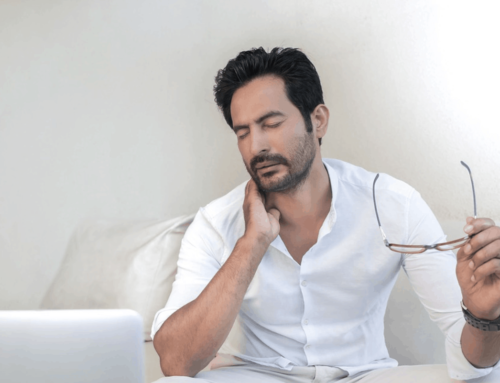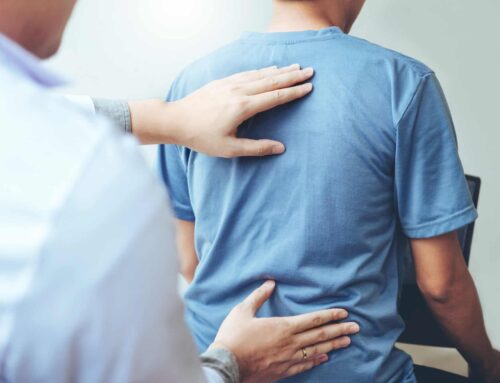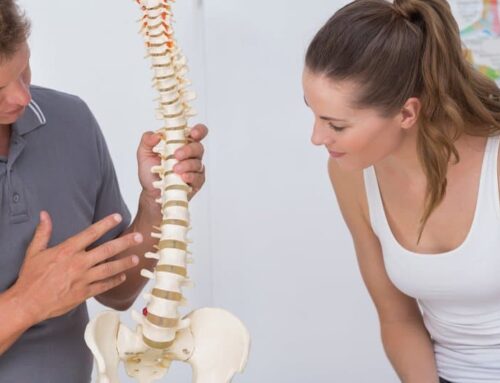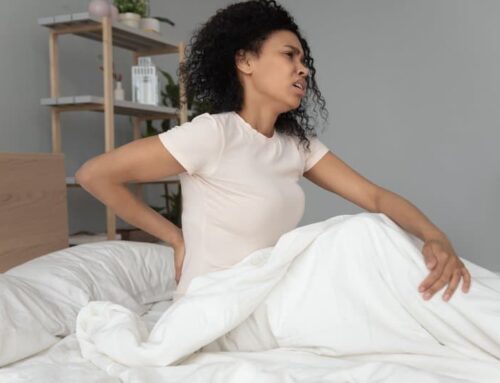Have you ever experienced pain, stiffness, or perhaps some muscle tension in your back, somewhere between your ribs and glutes? Sounds like lower back pain. Most people will experience some form of serious and/or chronic lower back pain at some point in their lives. In fact, nine out of ten adults will likely suffer some form of back pain at some point in their lives.
Unfortunately, lower back pain manifests itself in many different ways. It manifests differently for different people, and these differences can make it difficult to diagnose and treat. What’s more, there seems to be a gender gap that exists. On average, there are more incidences of lower back pain in women compared to men. The jury is still out on why, but many believe differences in physiology are a key reason. A 2018 study suggests that due to structure, female sacroiliac joints (SIJs) exhibited more flexibility compared to male SIJs. Thus, ligaments underwent larger strains compared to male ligaments—meaning women experience larger stresses and heavier loads on their SIJs.
Common Causes of Lower Back Pain In Women
However, this isn’t the only reason. Lower back pain can manifest in a number of different ways, and for a number of different reasons, including:
Sacroiliac Joint Dysfunction
Often misdiagnosed as herniated discs, sacroiliac joint dysfunction is an abnormal movement of the joints connecting the sacrum and pelvis. The pain can spread from the lower back to the legs, resulting in joint inflammation, or sacroiliitis. SI joint pain also manifests in the lower back or buttocks.
Coccydynia
Coccydynia manifests as localized pain when a person puts pressure on the base of the spine. The coccyx is the bone sitting at the base of the tailbone. Given the location and the physical trauma associated with activities like childbirth, coccydynia is more common in women than men but can happen to anyone.
Piriformis Syndrome
Piriformis syndrome occurs when the piriformis muscle, a small muscle that helps rotate the hips when moving, spasms. This then compresses the nearby sciatic nerve. Symptoms include tenderness and pain in the buttock area, plus sciatica-like pain in the thigh, calf, and foot. The pain magnifies when moving upstairs, after sitting, or while walking or running.
Menopause
Chronic lower back pain in women will often manifest during menopause. A majority of perimenopausal women experience symptoms like musculoskeletal pain directly related to estrogen deficiency.
Menstruation or Uterine Dysfunction
Dysmenorrhea is a uterine condition that causes frequent and severe cramping during menstruation. Primary dysmenorrhea is when a woman experiences sharp, atypical uterine contractions during her first period. This results in recurrent and severe menstrual cramping. Eventually, this phases into a more chronic secondary dysmenorrhea that often manifests as lower back pain in women.
Endometriosis
Endometriosis is a chronic condition realizing as a sharp pain in the pelvic area, caused by tissue masses known as fibroids forming around the uterus. This pain often radiates into the lower right back and has been known to cause abnormal menstruation cycles, frequent urination, and intercourse pain.
Pregnancy
Lower back pain is very common during pregnancy. Your center of gravity shifts, weight increases, and hormones relax muscles and ligaments in preparation for birth—all of these factors can contribute to lower back pain. Pains usually manifest at the back, below the waist, and across the tailbone, and in the second and third trimesters.
Treatments Known To Work For Lower Back Pain

There are some minor home remedies available that can help reduce lower back pain in women. If one is just trying to reduce pain and ease the pressure, try simple home remedies such as:
- Warm and cold compresses. Applying a heating pad or a hot water bottle can help boost circulation in affected areas. This stimulates the muscles to return to their normal state. A warm bath can also create the same effect. For pain caused by inflammation, a cold compress may do the trick instead.
- Over-the-counter pain relievers. Non-steroidal anti-inflammatory drugs (NSAIDs) can help alleviate pain. However, practice caution and always take medical advice when dealing with pain relievers.
- Physical activity. Stretching tense muscles and performing light exercises can improve blood circulation and relax tense muscles.
- Good lumbar support. Chairs that offer good lumbar support can help prevent improper posture when seating. Pillows that follow your natural contour can also help toward a good night’s sleep.
For more serious cases of lower back pain, especially for those that are chronic in nature, you should probably visit a medical specialist. An accurate, professional diagnosis can help come up with effective treatment solutions. Treatments can run from simple lifestyle management (diet, exercise, and rest) to corrective surgery. In between, pain management specialists assist with treatment programs to alleviate pain and resume normal daily activities.
Bigger Problems If Left Undiagnosed

Left untreated, lower back pain can persist and eat up your days, and might be symptomatic of bigger problems, such as ovarian cancer. Seek medical advice when experiencing the following symptoms:
- Inability to stand/sit
- Running fever
- Irregular bladder and/or bowel movements
- Continuous numbness or tingling in lower limbs
- Severe abdominal pain
- Vaginal pain and bleeding, including when urinating
- Lack of improvement even after a week of home care or NSAID treatment
Medical experts advise reporting any incidences of sudden lower back pain, especially if not related to any previous physical activity or if pain persists longer than expected.

Knowing what ails you is the first step in solving your problem. If you’re suffering from chronic pain that won’t go away with painkillers or home remedies, let Midsouth Pain Treatment Center help. Utilizing the latest technology in pain management, our team of expert medical providers can create a custom treatment for whatever your chronic pain might be. When dealing with lower back pain—or any other chronic pain—come visit or contact us for a consultation schedule. Together, we can help overcome debilitating pain.





